Suz Szucss Peripheral Vision
Julia Durst visited with Suzanne Szucs, discussing her work on the occasion of her show at the Duluth Art Institute, up through April 24. Szucs' five major bodies of work make for an impressive range.
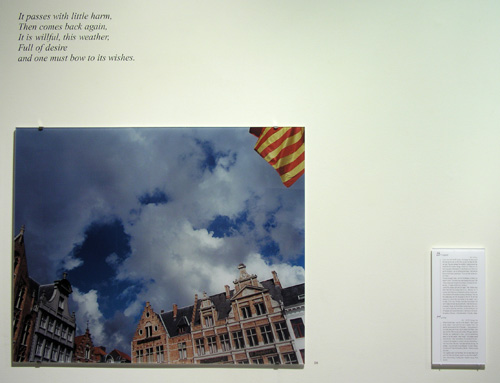
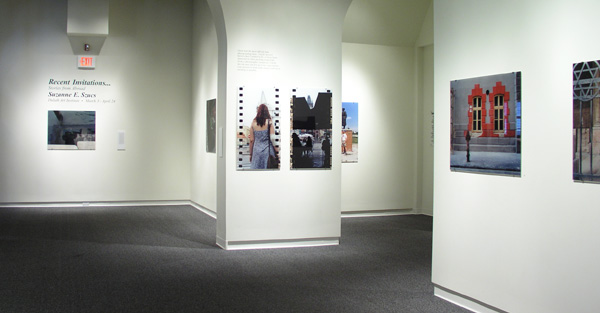
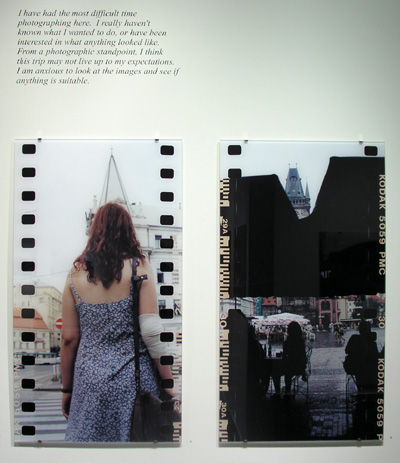
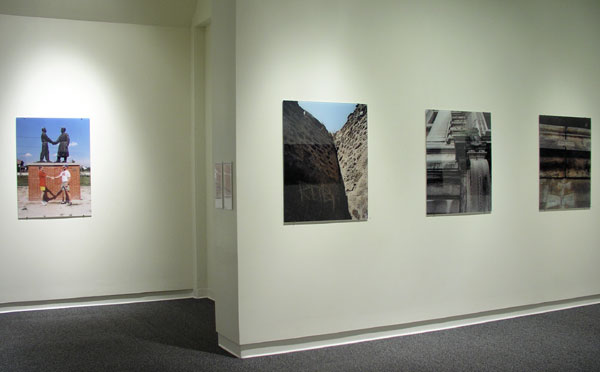
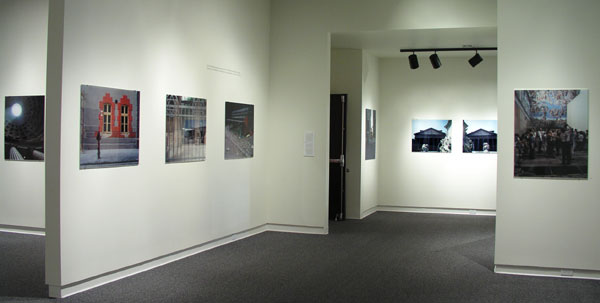
Religion and fine art both rely on one essential premise: belief. In religion, it makes mortals into saints, grape juice into blood at Sunday mass. In art, it gives objects– glass, clay, ink and paper– meaning beyond the physical. Because of belief, faith, and the power of perception, a kitschy chalice is a Holy Grail, an aquarium full of basketballs is a Jeff Koons original.
Suzanne Szucs is keen on this idea. The photographer has spent the last decade aiming her lens at painted faces, Roman ruins, old fortresses and dead deer, giving audiences a close-up look at what exists in the margins, persuading them it’s art.
When the Illinois Arts Council awarded her a fellowship in 1998, Szucs had the opportunity to explore the fringes a little farther from home. She left her teaching gig in Chicago for a 40-day backpacking trip through Europe during which she would photograph historical religious sites. Or so she said.
“I said I was exploring churches and ritual spaces mostly to get people off my back,” Szucs explained during a recent interview in Duluth, where she now lives. “I really just wanted to explore the roots of western art– you know, everything I had studied for so many years. But I did like idea of religious spaces… For me, the trip was like a spiritual pilgrimage. Spirituality, a sense of bliss, that’s something I find in art. It transforms things– even bird shit can be elevated.”
Indeed it can, as Szucs demonstrates in the large-format chromogenic print “Bird Shit,” part of her exhibit “Recent Invitations,” on display at the Duluth Art Institute through April 24. The show features selected prints from a series shot during the European trip seven years ago. The notion of belief is threaded throughout the show– what we believe to be important, photo-worthy. Where we look and why. Szucs challenges this, redirecting our gaze from the predictably important– churches, temples, statues– to the seemingly insignificant, the stuff that doesn’t make it onto postcards. The periphery. The details. Not only the bird shit, but the crowds, the buses, the badminton in the park. It’s an investigation of sorts.
“I’ve always been interested in the things people leave behind, what the story was there. It’s like following a visual cue for a sign of presence,” she explains. “In art, we’re taught to look at the grand gesture. I’m more interested in the cracks, the details.”
Szucs’s eye for understatement makes “Invitations” at turns curious, unexpected, beautiful. Interspersed among the prints are several placards of text, each with a date, location, and first-person recounting of that given juncture of the journey. In her photos, Szucs succeeds most in two approaches: when she shows the clash of past and present, and when she offers a new perspective (literally) by experimenting with angles and cropping.
“Heroes Square, Pest” shows buses parked among ancient columns, documenting the juxtaposition of modern-day automobiles with historic, monumental ruins. The image is a matter-of-fact statement of Then versus Now, much like “Bird Shit,” in which the gray exterior of the Palace of Justice is polka-dotted with bird droppings. Time has stripped the structure of its former dignity, weathering the stone and caking it with bird crap. Commentary lays buried here: animal shit on the judicial building.
Szucs’s unexpected viewpoints are as engaging and often prettier. In “Rob, Pompeii,” Szucs bypasses the grandeur of the site and pans in on a name (or command to loot the place) scrawled onto the brown stone. The image becomes an abstract convergence of lines and shadows. “Sistine Chapel, Vatican” captures the tangle of fanny-packed, sandal-clad bodies looking up– an ironic mirroring of Michelangelo’s crowded masterpiece above them. “Brugge” functions similarly, overlooking the buildings and people to the cloud-filled expanse above. Spires and chimneys bite at the bottom of the page; in the upper right, a billowing striped flag licks the corner.
Szucs stumbles in a few spots. Some photos are almost too pedestrian, such as “Badminton, Central Park,” which looks too much like it was snatched from a tourist’s photo album. Likewise, “John and Doug at Szorba Park, Buda” (two men mimicking a statue’s pose) lacks the attention to light and composition so apparent elsewhere. Also, the travelogues posted throughout the gallery are not in chronological order. It’s just a minor nuisance, though, because the writings are so essential in keeping the exhibit personal. They give viewers a sense of who is behind the lens and invite them along on the trip. The writings are terrifically honest and quell notions that making art is simply a romantic process of inspired vision and flawless execution. It is work; it is taking an object, an image, an idea, and making people believe it is art.
That is just what Suz Szucs does well. “Recent Invitations” is one of the five major photo projects of Szucs’s career, each of which take a very different approach to one common idea: the marks people leave behind. She started with “Masks and Markings” (1993-95), in which she examined the alteration of the body through formal portraiture. She followed that with “Recent Invitations” (1998-2000), then “Forts” (2002-03).
“Forts” led Szucs into the woods of the Pacific Northwest to explore abandoned, unfinished coastal defenses, encrusted in decades of moss as though the earth had swallowed them. Szucs was an artist in residence at the Centrum Center for the Arts and Education at Worden State Park in Port Townsend, Wash. The project had her “exploring the relationship of structure to environment,” and marked the first time the artist worked solely in digital format. It allowed her to edit as she worked. She says she has no qualms about incorporating new technology into her process. “I don’t have a hierarchy about art. I like digital photography; it’s a good tool.”
“Deer Project” (2003-04) was something of a departure from Szucs’s earlier work. It focused on the dead deer found roadside in northwestern Wisconsin. The animals are a familiar sight to the residents of the region. The deer are admired for their beauty, then shot down for dinner or struck on the drive home. Szucs’s challenge was to make her deer pictures art, not just wildlife autopsy photos. Amazingly, she manages some intangible process of beautifying roadkill. The pictures are somber, peaceful, quiet under the weight of a winter sky. Peripheral vision again: the roadside ditch, the edge of the woods.
Suz Szucs pays homage to the great tradition of self-portraiture in her fifth major photo series. Keeping faith with her disinterest in the “grand gesture,” Szucs rejects taking one all-defining photo. Rather, for the past 11 years she has taken one Polaroid shot of herself every day. It began as a reaction to her “Masks and Markings” series, which employed what the artist called “an excessively formal style.” The casualness of an everyday Polaroid proved the antidote, conceptually rich, brimming with allusions to our multiplicity as humans, to evolution and self-obsession and the never-ending task of re-invention. When installed for exhibition, Szucs says the “4″x4″ Polaroids have been arranged chronologically in strips of 17, equalling my height of 5’6″. It grows an average of seven feet a year.” In 2002, after eight years, the Polaroids numbered about 3000 and stretched to 56 feet when on display.
Parts of the Polaroid project will be on display this August at Washington Galleries when Szucs joins Rob Quisling to present “Volatile Bodies.” Besides the Polaroids, the artist will show other small framed digital prints that deal with issues of the body. The exhibit is just one of several shows in which Szucs has participated in the past year. A handful of solo, group, and juried shows have had her working at a dizzying pace in recent months, ready to get back to making art. When considering what direction her new work might take, she mentions a desire to incorporate verbal narratives and experiment with video. She also expresses a hope to visit Italy again soon, citing an interest in proto-Christian art. Whatever she does, Szucs will continue to challenge audiences to rethink life’s focal points.
Show information:
“Recent Invitations,” through April 24
George Morrison Gallery, Duluth Art Institute
506 W. Michigan St.
Duluth, MN 55802
(218) 733-7560
The deer project can be seen at Flatfile Gallery in Chicago as part of the
“Exquisite Corpse” group show. Opening reception will be Friday April 8th, 5-9pm
Flatfile Galleries are located at
217 North Carpenter, Chicago, IL 60607
phone: 312.491.1190
Hours are T-Sat 11-6
Suz Szucs’s web sites:
http://webpages.charter.net/suzszucs/
http://www.mnartists.org/szucs
DAI web site:
www.duluthartinstitute.org